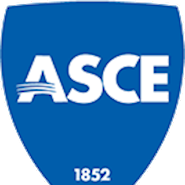James Arthur “Jim” Rossberg, an ASCE staff force for nearly 30 years who led the development and launch of the Structural Engineering Institute, the Utility Engineering and Surveying Institute, and ASCE 7, the national loading standard for buildings and other structures, among many groundbreaking achievements, has died at 65.
Rossberg, P.E., F.SEI, M.ASCE, was 16 months into a well-earned retirement that began in October 2022. His passing has shocked the structural engineering community. “Like getting a gut punch,” said Distinguished Member Robert E. Bachman, who worked closely with Rossberg on developing ASCE 7 through its launch, revisions, and updates and became a close friend. “Jim was a true leader and one of ASCE's guiding forces.”
Rossberg’s ties to ASCE date to the late 1970s when he was a student member at Old Dominion University, where he earned a bachelor’s degree in civil engineering in 1980 and a civil engineering master’s degree in 1982. He began work at ASCE in 1993 as part of the Civil Engineering Research Foundation, a Society affiliate focused on advancing the design and construction industry through innovation. He also served as marketing manager for the Highway Innovative Technology Evaluation Center.
Shortly after that, Rossberg became ASCE’s director of codes and standards, growing the program from 10 to over 50 standards. In 1997, he launched the Structural Engineering Institute, one of ASCE’s first two institutes, while still heading up work on codes and standards. His extensive accomplishments with SEI include growing it to a vibrant community of 30,000 members.
Rossberg was the principal ASCE staff member involved in developing ASCE 7, Minimum Design Loads and Associated Criteria for Building and Other Structures, and its adoption by the International Building Code, making it mandatory in the design of most new structures in the United States, enhancing their safety and resilience. He also oversaw its multiple revisions.
On the morning of Sept. 11, 2001, Rossberg was sitting in a parking lot across from the Pentagon on a conference call discussing a blast standard with ASCE members in Manhattan when the World Trade Center was attacked. After the shock of the second attack on the towers, Rossberg was rocked by the Flight 77 hijackers’ strike on the Pentagon. Immediately following, he created and staffed post 9/11 building performance teams for the Trade Center and the Pentagon and co-produced their reports. Engineering News-Record named Rossberg one of its Top 25 Newsmakers in 2002 for his leadership. Involvement in many other ASCE disaster response teams, including those for the Murrah Building in Oklahoma, Hurricane Katrina, and the Chilean earthquake.
In 2011, Rossberg became managing director of engineering programs, overseeing all eight of ASCE’s specialty institutes and while in the role, he added a ninth – the Utility, Engineering and Surveying Institute.
“I can’t even begin to express how much Jim meant to me,” said ASCE Fellow David Odeh, whose activity with Rossberg included serving as 2016 SEI president. “He was my guiding light at ASCE. Most of all he was my friend … I am beside myself with sadness, we have all lost a great friend and a champion of our profession.”
In gratitude for his contributions to ASCE, Rossberg received the 2022 William H. Wisely Award from ASCE’s president and executive committee.
Upon retiring, reflecting a sense of humility about his achievements and contributions to the profession, Rossberg said without hesitation that he wanted his legacy to be the many staff he hired and volunteers he supported, and the ASCE activities he took part in.



